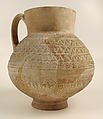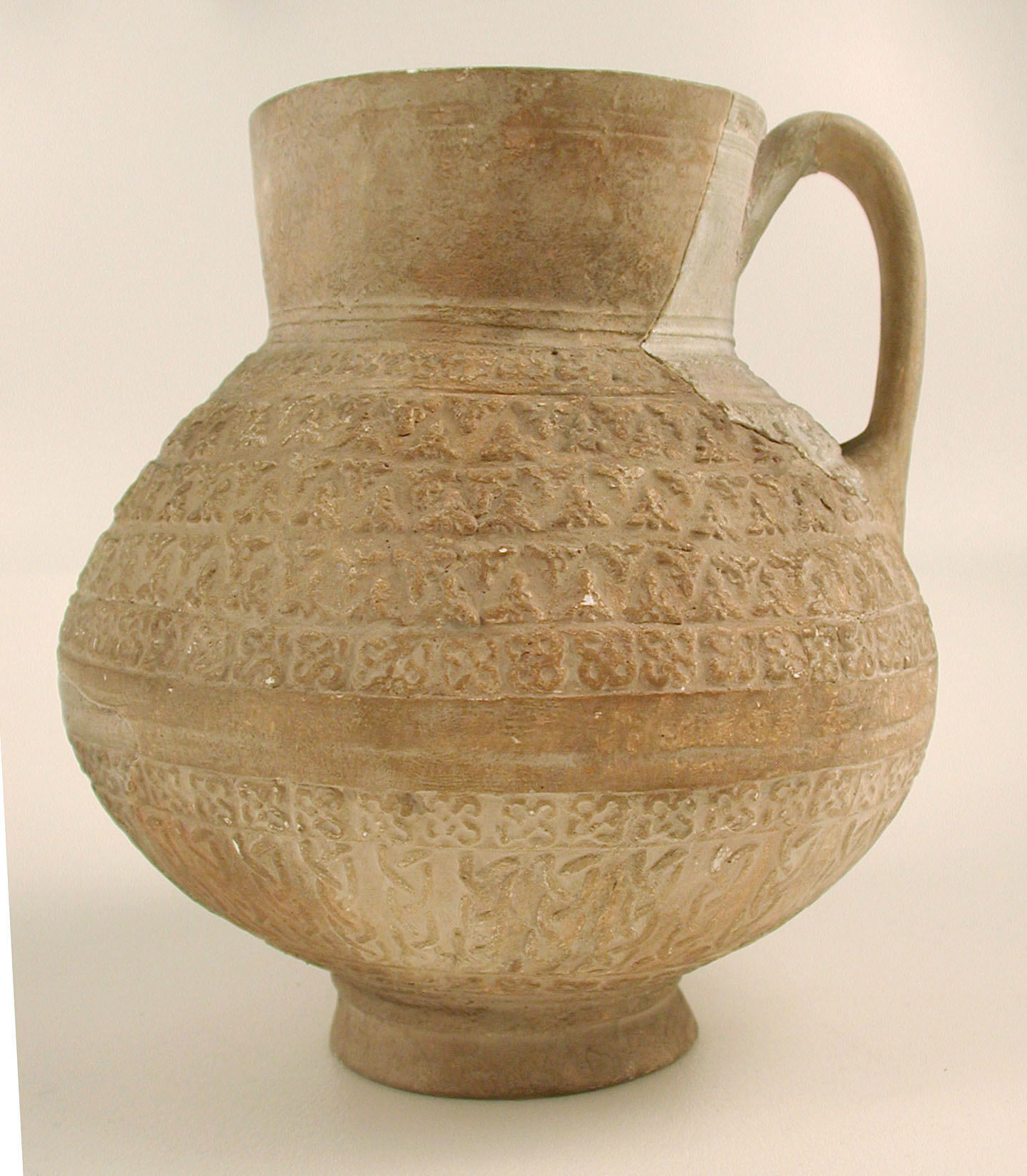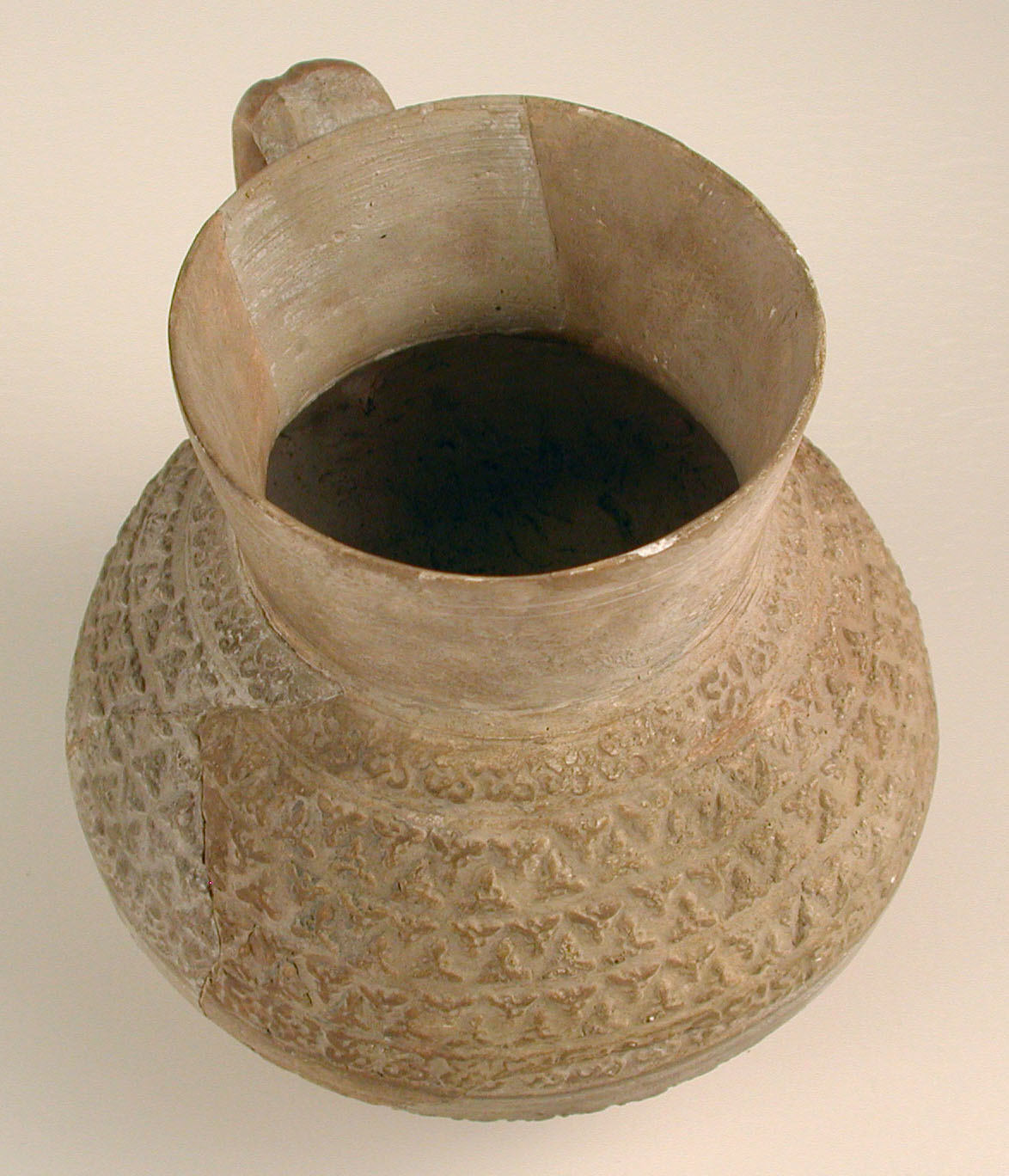Ewer
Not on view
This earthenware pitcher was excavated from Nishapur in eastern Iran along with several other unglazed vessels (including 36.20.7 and 36.20.8). It provides a good example of one technique used at the site to create vessels with complex shapes. Like the other unglazed pieces found alongside it, this piece was made in several parts. Its bulbous body is composed of casts from two hemispherical molds that had been stamped with impressions. These impressions created the raised repeat patterns that decorate this part of the surface. The two hemispherical parts were then joined with a binding medium of wet clay. This join is still clearly visible in the band of smoothed clay that runs across the center of the body. After these two pieces were connected, the undecorated neck and handle were thrown on the potter’s wheel and attached to the molded body.
Due to rights restrictions, this image cannot be enlarged, viewed at full screen, or downloaded.
This artwork is meant to be viewed from right to left. Scroll left to view more.





